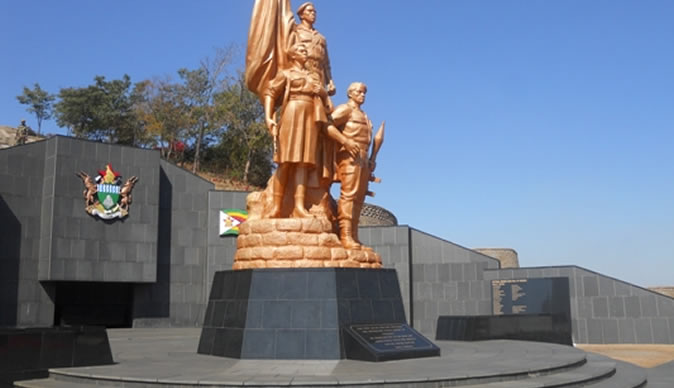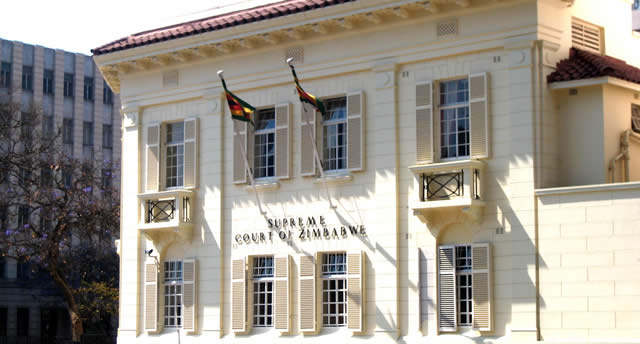Liberation and the Shona novel

David Mutasa and Willie Chigidi
The Second War of Liberation that the indigenous people of Zimbabwe waged against settler occupation and colonial rule was an event of monumental proportions that had far-reaching effects for the country, the region and perhaps the rest of the world. It affected and changed the lives of many people in many ways.
Thousands of people died, hundreds were permanently maimed, others rose to fame, and many got rich while others got land that they could call their own for the first time.
It was imperative that an event of this magnitude and influence should provide writers with ready-made material which they could use to write their fiction, because there is always an intrinsic relationship between literature and society.
Writers of fiction often draw their material and their inspiration from happenings in their environment. The Second War of Liberation in Zimbabwe certainly provided that kind of material and inspiration.
The armed struggle in Zimbabwe lasted for nearly thirteen years, yet throughout that entire period no single Shona novel depicting the liberation war was published. It was not possible for a work of art that did not reflect the general colonial settler ideology to be published and remain unbanned.
Any work of fiction that talked about a war in which blacks were killing whites, even though whites were also killing blacks, was not allowed to be published. The Rhodesian Literature Bureau, a department of government under the Ministry of Information under whose supervision the development and distribution of literature in indigenous languages took place, would never allow such novels to be published.
As Emmanuel Chiwome observes, “The resultant fiction was underdeveloped by avoiding politics, the root of the reality dealt with in fiction”.
To write about the war of liberation at this time was tantamount to writing politics. This is not to suggest that it is wrong to write politics. In colonial Zimbabwe, it depended largely on the perspective from which one wrote about the war. While a plethora of fictional works about Zimbabwe’s guerrilla war written by whites in English appeared during the liberation war itself, no single Shona war novel was published before 1980.
The theme of Zimbabwe’s liberation war was a political one. “Unlike the pre-independence Zimbabwean novel in English whose fate was decided in Europe, the fate of the Shona novel was determined at home,” said Chiwome.
He shows that there are several instances when manuscripts were rejected or doctored because they dealt with sensitive issues, and he gives examples of books such as Solomon Mutswairo’s Feso (1956), E.M. Zanza’s Hunde Yorufu (1971) and Mordekai Hamutyinei’s two manuscripts that were rejected in the mid-1960s.
Shona fiction depicted the guerrillas as people with a great moral authority on their side because they believed they were fighting to create democratic space that would enable them to reclaim their land and birth right, would be judged to be subversive.
Shona literature had helped to plunge an oppressed people into a war of liberation before that literature was stopped, and then it took the liberation war to in turn liberate the writer so that he could write even on politics.
Mutsvairo’s Feso (1956) allegorically painted a glorious picture of Zimbabwe’s past while at the same time painting a grim picture of the existence of Africans under colonialism.
The novel also contained a political protest poem O Nehanda Nyakasikana in which the speaker appeals to the guardian spirit of Nehanda to come and rescue her people from slavery.
Although the novel was banned and removed from the school syllabus the famous prayer to the spirit of Nehanda, was read or recited in the late 1950s and early 1960s at the beginning of the mass nationalist rallies in the townships.
The famous prayer to Nehanda fired the Zimbabwean people with aggressive national feelings and inspired many young men and women to take up arms to free their country from colonialism. The armed struggle in turn created the necessary democratic space in which writers could feel free to write about the war that liberated them.
The armed struggle in turn created the necessary democratic space in which writers could feel free to write about the war that liberated them.
The novel Feso and its allegorically political message of resistance “threw the writer into battle” as Jean-Paul Satre posited and that battle produced freedom in which the Shona war fiction writers could write about the war of liberation from the point of view of those who were fighting for that freedom.
The activity on the literary scene, the urgency and the willingness to write Shona works about the liberation war by Shona writers in the years immediately following the attainment of independence, stand in clear contrast to the inactivity and reluctance to write about the same war that characterised the liberation war years.
In the absence of political freedom the Shona war fiction writer could not hope to publish in colonial Zimbabwe works that depicted the liberation war in the manner he wanted. It was partly the advent of the new political dispensation of independence and freedom that allowed the Shona war fiction writer to glorify the liberation war and present it as a historic and heroic struggle of the oppressed indigenous people against white minority rule.
Adapted from: Black Writers’ Shona novels of the liberation war in Zimbabwe: an art that tells the truth of its day









Comments